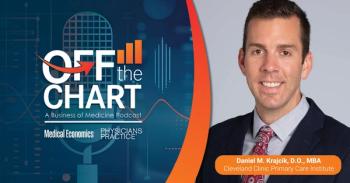
RPM cuts hospital readmissions by 50% for heart patients, study finds
Reduced readmissions extend out over a year for patients with remote monitoring.
Remote patient monitoring (RPM) led to a 50% reduction in 30-day hospital readmissions for patients with
Within 30 days, 74 patients using RPM, or 7%, had a hospital readmission, compared with 3,840, or 15%, of the patients not using the remote monitoring.
“The significant reductions in hospitalizations at 30 days and extending to one year are a powerful statement to the effectiveness of Medicare’s chronic care and remote patient monitoring programs,” MD Revolution co-founder Samir Damani, MD, said in a news release. “The clinical impact is remarkable given that only 10 people have to be enrolled in the program to prevent a single hospital readmission. This is almost an order of magnitude greater in clinical impact than what is seen from common therapies such as statins used in millions of people in the prevention of coronary heart disease. Accordingly, anyone who qualifies should be enrolled in a chronic care management program.”
In a
Cardiac readmission costs an average of $15,000 per patient, according to
Cardiac Solutions began using the RPM system for Medicare patients in late 2021. Patients using RPM had lower readmission rates compared with those not using it, across longer time periods:
- 60 days: 108 (10%) using RPM vs. 5,266 (21%)
- 90 days: 126 (12%) using RPM vs. 6,025 (23%)
- 120 days: 142 (14%) using RPM vs. 6,427 (25%)
- 180 days: 161 (16%) using RPM vs. 6,976 (27%)
- 365 days: 201 (19%) using RPM vs. 7,757 (30%)
Using
“Our goal was to reach patients with chronic conditions and provide them with quality care in between their already scheduled in-office visits with cardiologists,” Cardiac Solutions Operations Director Christine Onstott said in the news release. “Keeping a patient out of the hospital is good for the patient, insurance providers, and hospitals."
Newsletter
Stay informed and empowered with Medical Economics enewsletter, delivering expert insights, financial strategies, practice management tips and technology trends — tailored for today’s physicians.














